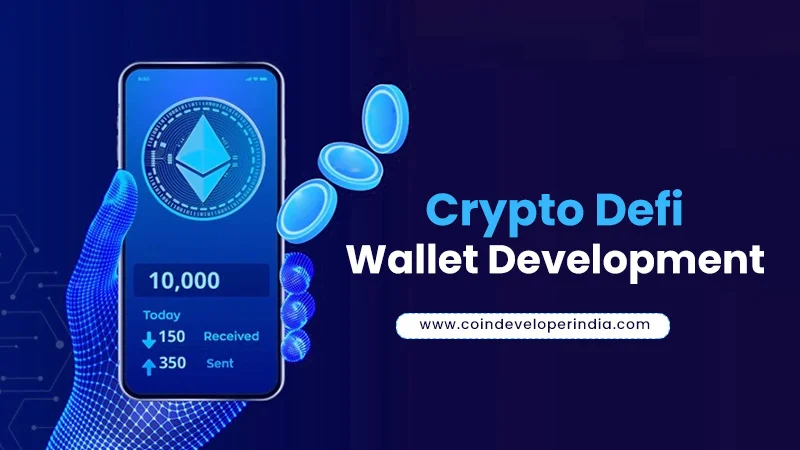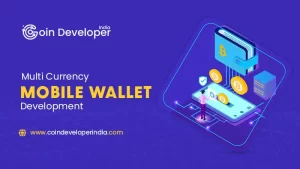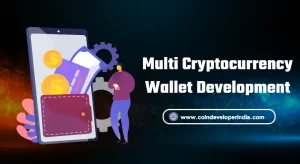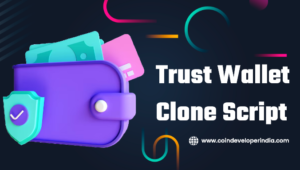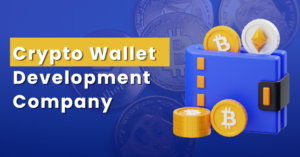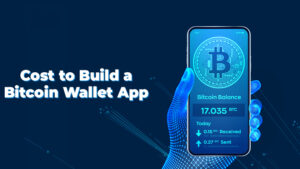Decentralized finance is undoubtedly the next big trend in the cryptocurrency ecosystem. Consequently, DeFi wallets have become one of the most popular wallet types.
Therefore, if you are planning on developing a DeFi wallet, you are on the right track.
This blog will highlight all the crucial stores involved in DFi wallet development, all while exploring the key features and costs of crypto wallet development.
So, without further ado, let’s get started —
What is DeFi Wallet
DeFi wallet, short for decentralized finance wallet, is a digital wallet that allows users to securely store, manage, and trade cryptocurrencies and other blockchain-based assets.
So, how does a DeFI wallet differ from conventional crypto wallets?
Unlike conventional wallets that are under the control of an intermediate authority such as banks or exchanges, the DeFi wallet is unsupervised. This eliminates the need for third-party intermediaries and provides increased security and transparency.
DeFi wallets are the key to trade operations in a decentralized financial system, where users can access a range of financial services such as lending, borrowing, gambling, and trading through blockchain networks directly.
These wallets typically support multiple cryptocurrencies and often integrate with decentralized applications (dApps), providing a wider trading area. In addition to basic wallet functionality, DeFi wallets can also connect to smart networks. This allows users to make complex financial transactions without the need for intermediaries.
Some popular DeFi wallets include MetaMask, Trust Wallet, and Coinbase Wallet, each of which offers unique features and is compatible with different DeFi platforms.
As DeFi grows, these wallets will become essential tools for users who want to explore the world of decentralized finance.
Key Features of Crypto DeFi Wallets
DeFi wallets differ from traditional wallets due to several features such as their decentralized nature, enhanced security, and seamless integration with the decentralized finance ecosystem. Here are the key features that make them unique:
Decentralization and User Control Over Funds
One of the key features of the DeFi wallet is decentralization. As DeFi wallets are non-encrypted, users have complete control over their money and private keys. Unlike centralized wallets that are managed by exchanges or banks, DeFi wallets eliminate the need for third parties. Users are solely responsible for their assets. As a result, users have greater autonomy and reduce hacking or loss from third-party failures.
Integration with DeFi Protocols and Platforms
DeFi wallets are designed to work directly with decentralized financial systems and platforms. Therefore, they allow users to access a range of financial services such as lending, borrowing, gambling, and trading. These wallets communicate seamlessly with decentralized applications (dApps) and smart contracts. This allows users to perform transactions without switching between different wallet interfaces.
Multi-chain Support and Asset Management
Another unique feature offered by DeFi wallets is the multi-chain support. These wallets typically support multiple blockchain networks, Hence, they allow users to centrally manage digital assets from different chains. This flexibility makes it easier for users to explore and participate in different DeFi projects across different ecosystems.
Enhanced Security Features
Safety is supreme in a DeFi wallet. Advanced security features such as biometric authentication, two-factor authentication (2FA), hardware wallet compatibility, encryption protocols, etc. are usually provided.
Step-by-Step Crypto DeFi Wallet Development
Developing a crypto DeFi wallet involves several key steps to ensure that the final product is secure, user-friendly, and functional. Here’s a detailed look at the development process:
Step 1: Planning and Research
The development of a DeFi wallet begins with thorough planning and research. This phase involves defining the purpose of the wallet and the target audience.
The major things that you should focus on include identifying the specific as well as researching features that will differentiate your wallet from competitors. Moreover, focuses on understanding regulatory requirements, and market trends including user needs.
By gathering insights from potential users and industry experts, you will be able to develop a clear roadmap that defines project goals, resources, and timelines.
Step 2: Choosing the Right Technology Stack
The next important step is choosing the right technology stack to build your DeFi wallet. Technology stack simply means the programming languages, frameworks, and tools used to develop the wallet.
The most common stacks are Solidity for smart contract development on Ethereum, and JavaScript or TypeScript for front-end development.
Developers may also need to choose blockchain networks, such as Ethereum, Binance Smart Chain, or Polygon, depending on the needs of the wallet. If the goal of the wallet is to manage assets on different blockchains, the technology stack must support multi-chain operations.
Step 3: Wallet Design and User Interface (UI/UX)
Designing a user-friendly interface is important to provide a good user experience. Make sure the DeFi wallet is intuitive, allowing users to easily access and manage their assets. Items such as customer history, balance considerations, and integration with the DeFi protocol should be presented.
Moreover, accessibility and responsiveness across devices and screen sizes are also major considerations. User testing in this step helps identify potential issues and prepare the system to meet user expectations.
Step 4: Security Features Implementation
Security is one of the most important aspects of a DeFI wallet. Therefore, it is important to implement strong security features that protect users’ money and personal information.
Key security measures include
-
Private key encryption
-
Secure encryption solutions
-
Multi-factor authentication (MFA).
Additionally, developers should integrate backup and recovery options such as seed phrases to ensure users can recover their accounts if needed.
Step 5: Testing and Deployment
Before the final deployment, it is important to thoroughly test the DeFI wallet to ensure efficiency and security. The testing phase includes functional testing, where developers ensure that all features work as intended, and performance testing to check how the wallet works under different conditions.
Security testing is also important to identify and prevent errors. After testing and fixing issues, the wallet is deployed on selected platforms, such as mobile app stores or web browsers. Once launched, you must continue to monitor the wallet and provide regular updates or patches as needed to maintain functionality and security.
By following these steps, you can create a reliable and secure DeFi wallet that meets the expectations of users.
Cost to Develop Crypto DeFi Wallet
The cost of creating a Crypto DeFi wallet can vary widely, typically from $25,000 to $200,000. Many factors affect the cost of development including wallet features, security measures, and overall complexity.
A general DeFi wallet, which includes important functions such as asset management, basic networking capabilities, support for blockchain, etc., typically falls under this range. These wallets are easy to manufacture, with minimal advances and customization required.
On the other hand, an advanced DeFi wallet includes advanced features such as multi-chain integration, smart contract integration, and advanced security measures. These features can push the price up. Moreover, feature complexity such as biometric authentication, end-to-end encryption, and robust backup options add layers and require additional development time and expertise.
Adjusting wallet design, integrating specific DeFi protocols, and using specialized functionality can increase overall costs. Ongoing maintenance, including new features, bug fixes, and support increases long-term costs.
The Future of DeFi Wallets
The future of DeFi wallets is sure to face significant growth. This is evidently because of the technological advances and growing adoption of decentralized finance.
As DeFi grows, wallets will likely integrate advanced features such as artificial intelligence and machine learning for enhanced security and personalized user experience. Moreover, multi-chain integration will become the future too. It’ll enable multiple blockchain networks, providing easy connections in the blockchain network.
Additionally, integrating decentralized solutions can improve user privacy and simplify onboarding processes. Integration with DeFi systems and upcoming financial services will further extend the capabilities of DeFi wallets. Users will have a comprehensive set of tools to manage their assets.
Regulatory developments will also determine the future. Therefore, wallets must adapt to new compliance requirements while maintaining the core principles of decentralization.
Parting Words
There you have it – a complete guide to DeFi wallet development.
We certainly hope that this blog has cleared all your doubts related to developing a DeFi wallet. Remember, all these development steps might seem easy upon reading, however, implementing them is where the real hard and complex work starts.
We highly recommend hiring a professional DeFi wallet development company to fulfill all your development needs.
Connect with Coin Developer India today and get your crypto DeFi wallet developed by a team of experienced developers on your side. You’ll be all on your way to build your successful crypto DeFi wallet!
Call/Whatsapp: +91 7014607737 | Email: [email protected] | Telegram: @vipinshar


